Proof-Heavy Smart Contract Portfolios: What Hiring Managers Actually Trust (2025 Edition)
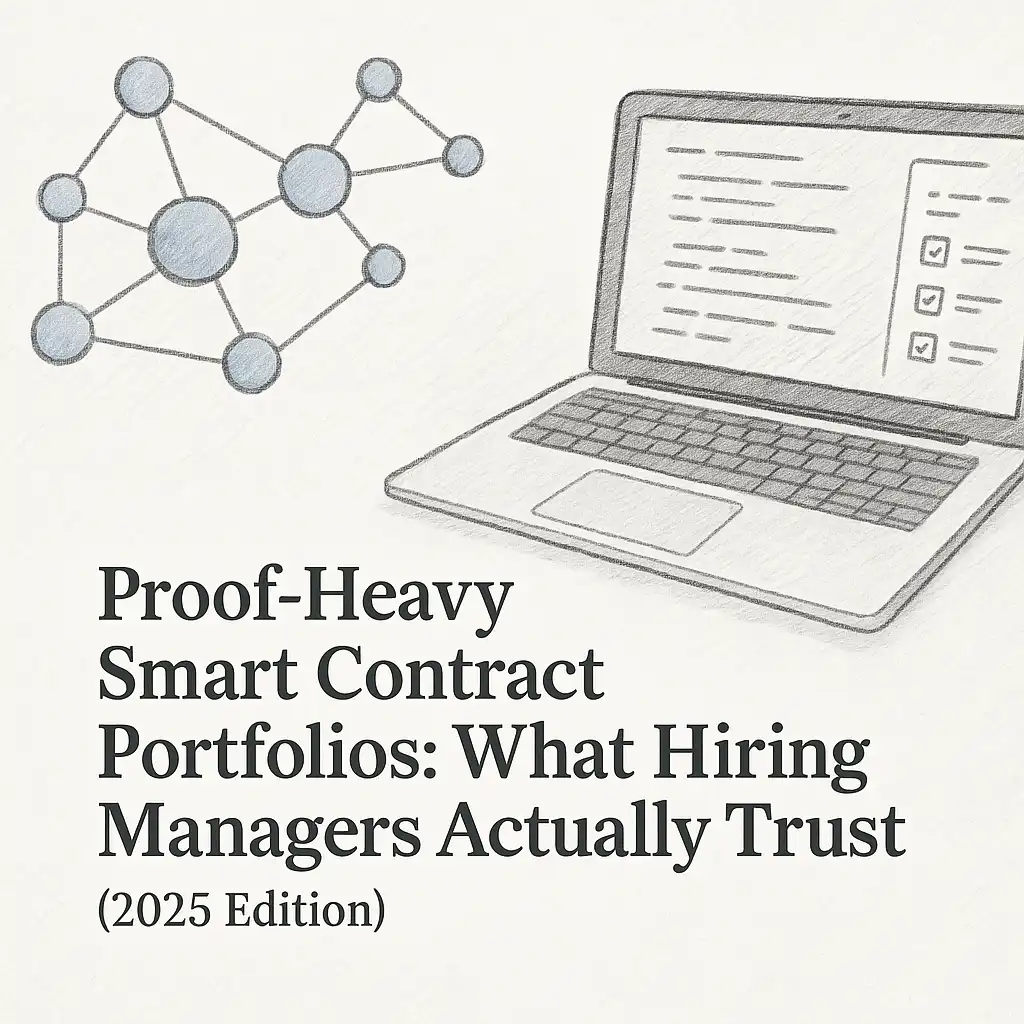
Introduction — The Rise of the Proof Economy
Inside ArtofBlockchain.club, after reviewing hundreds of recruiter–candidate discussions, one truth stands out:
In 2025, blockchain hiring runs on proof — not potential.
Recruiters no longer rely on polished résumés or generic GitHub profiles. They trust what can be verified — documented repos, public audits, measurable design outcomes, or community feedback loops.
Across roles — smart-contract developers, auditors, UI/UX designers, or content writers — verifiable output has become the universal trust signal. The hiring mindset now mirrors blockchain itself: transparent, auditable, and immutable.
Why “Proof” Became the New Hiring Currency
The Electric Capital Developer Report 2024 shows that while blockchain developer counts have stabilized, demand for demonstrable on-chain and open-source experience keeps rising. Recruiters want reproducible work, not theoretical skills.
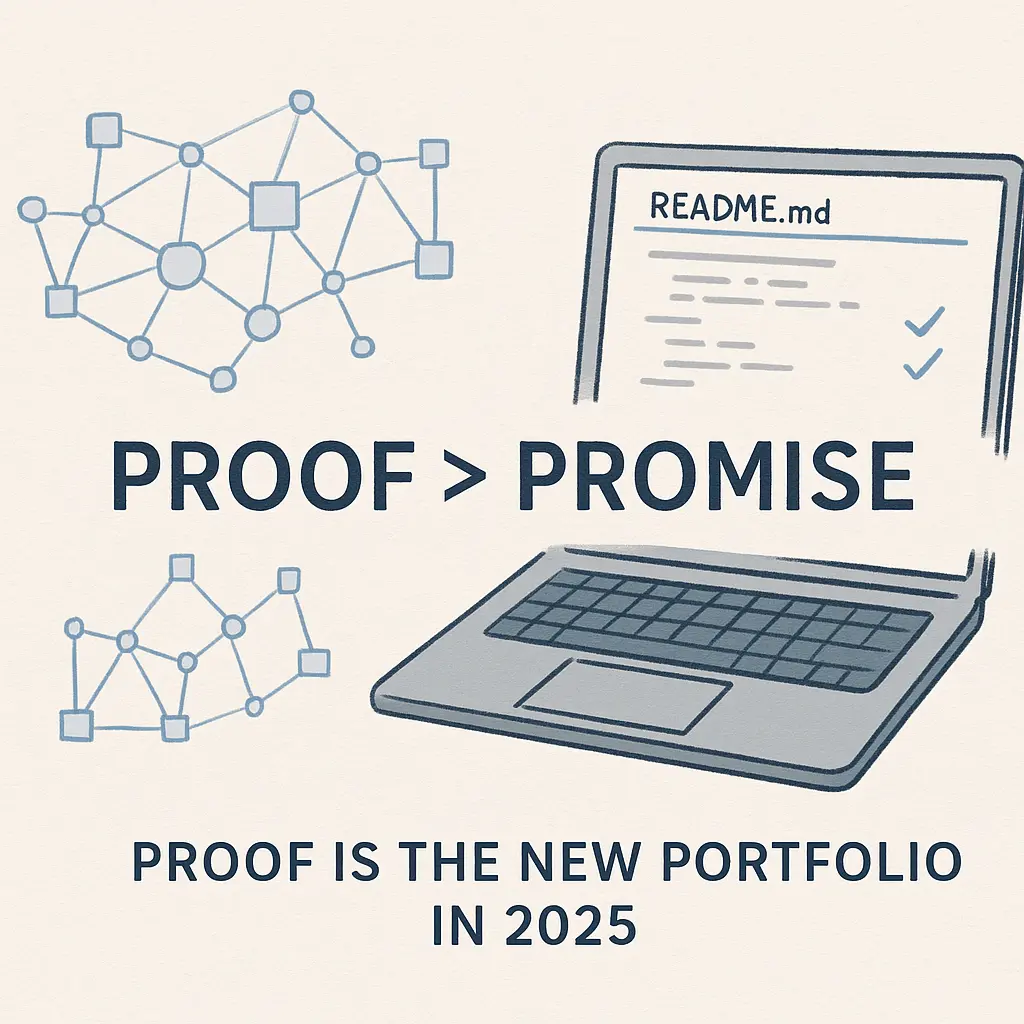
GitHub Is the New Résumé — Context Is the Currency
Modern recruiters don’t count commits; they interpret context.
A well-written README.md explaining why a contract exists, how it evolved, and what tests verified it often carries more weight than fifty inactive repositories.
According to GitHub Education, recruiters now scan for:
Commit stories that show logical problem-solving progression.
Reproducible documentation and test instructions.
Collaborative traces like pull requests and peer reviews.
(See also → What junior blockchain developer portfolio projects actually impress hiring managers?
A recruiter in one AOB thread phrased it bluntly:
“If a portfolio can’t teach me how to run your code, I can’t trust you to ship it in production.”
How Recruiters Evaluate Proof in 2025
Across AOB threads and LinkedIn’s Jobs on the Rise 2025, three recurring trust anchors define modern Web3 recruitment.
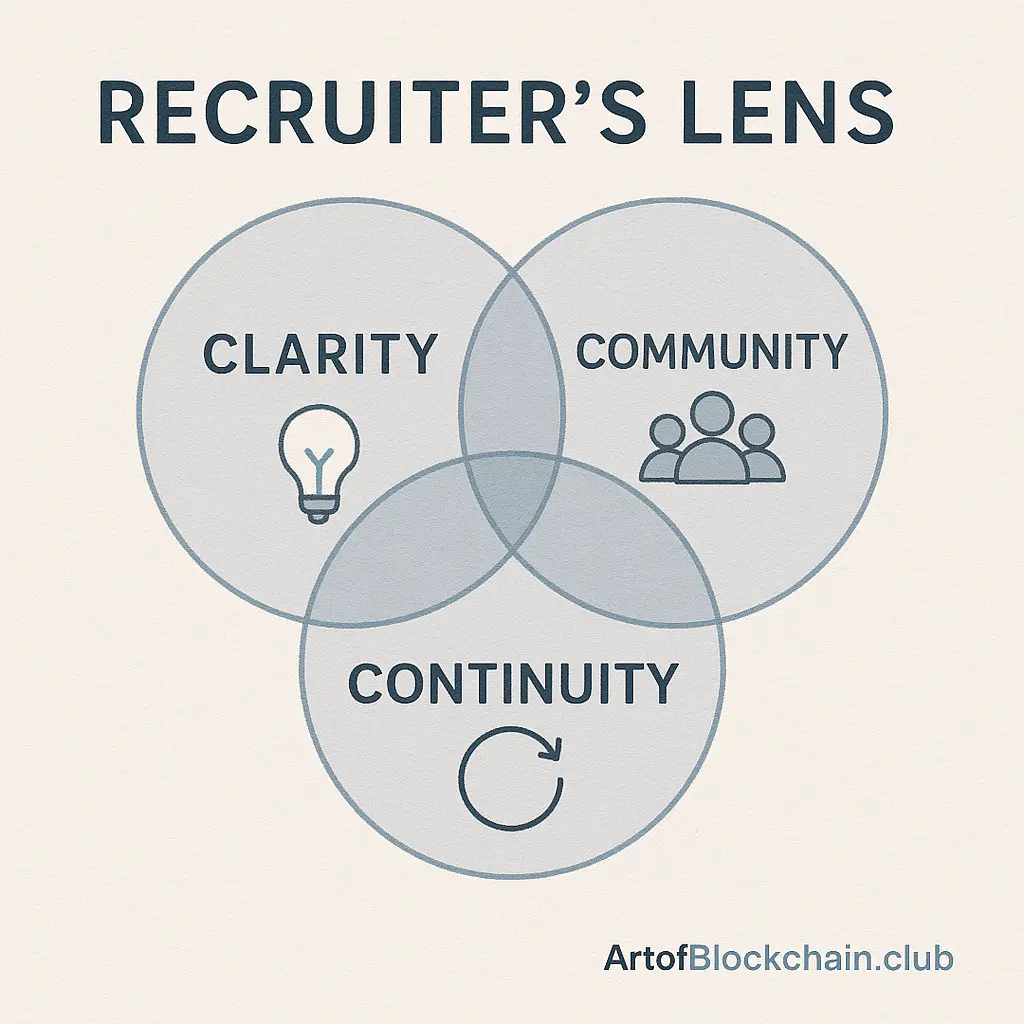
1. Clarity of Intent
Recruiters begin by asking: Why does this project exist?
Even a simple ERC-20 contract that implements secure patterns from Ethereum Smart Contract Security Guidelines feels more trustworthy than an unfinished DeFi clone.
They look for:
Documented purpose and scope.
Clear testing instructions or audit notes.
Transparent change logs showing iteration.
2. Community Engagement
Forks, stars, and open issues aren’t vanity metrics — they signal ecosystem interaction.
Recruiters notice when a candidate’s code has been discussed or used by others.
It suggests peer validation and knowledge-sharing — critical trust indicators in remote teams.
3. Continuity Over Time
A portfolio that shows steady progress (builds, fixes, upgrades) signals consistency.
Stagnant repos raise doubts about skill relevance and learning habit.
(Related discussion → Recruiters — How do you actually check if someone’s blockchain experience is real?
For Candidates: Turning Work into Proof
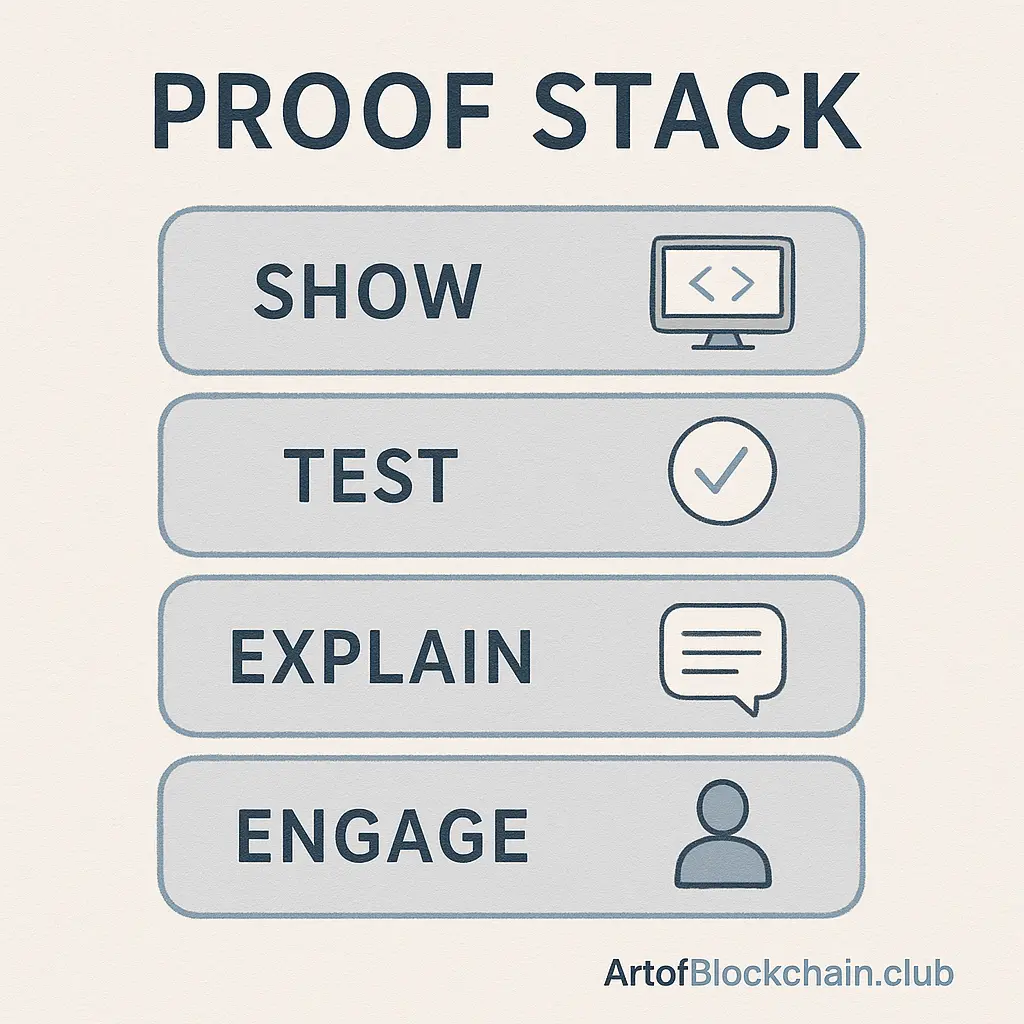
From developers to designers, the goal is the same: show traceable learning and outcomes.
Document Your Process, Not Just Results
Developers: include gas-report screenshots or test logs from Hardhat or Foundry.
QA engineers: attach bug tracking or reentrancy simulation reports.
Designers: share interactive Figma flows or token-gated UX prototypes.
Writers: link analytics dashboards showing engagement or SEO impact.
One junior QA tester on AOB shared how attaching screenshots of transaction failures in testnet reports helped her get short-listed for a Layer 2 internship. Proof speaks louder than potential.
Build a “Proof Stack” Section
Add a dedicated portfolio segment listing your repos, deployment addresses, testing frameworks, and audit notes.
This acts as your career ledger — quickly verifiable by any hiring manager.
Convert Projects into Case Studies
Follow the structure Problem → Approach → Proof → Outcome to narrate each project.
Example: “Implemented DAO voting contract in Foundry. Initial gas usage 6.2 M → optimized storage → reduced by 27 %. Peer-reviewed via AOB thread.”
(Deep guide → Building a Blockchain/Web3 Portfolio Site — Sections, Case Studies, and Metrics (https://artofblockchain.club/discussion/building-a-blockchainweb3-portfolio-site-sections-case-studies-and-metrics))
ArtOfBlockchain Observation: The Proof Gap
Through community data and recruiter interviews, AOB found a consistent disconnect:
Candidates believe proof = number of projects.
Recruiters believe proof = depth of reasoning.
The gap is narrative, not technical. Recruiters value why decisions were made — not just what was built.
As Chainalysis emphasizes, transparency builds trust. A candidate who documents trade-offs and failures shows the same mindset required to maintain secure, auditable systems.
Common Red Flags Recruiters Notice
Why It Matters
Forked repos with no credit or learning notes
Signals plagiarism and lack of self-reflection
Unrealistic claims (“100 % test coverage”)
Impossible without logs — undermines credibility
Anonymous handles
Hard to verify authorship
No iteration trail
Shows stagnation or abandonment
Flawless repos (no errors/history)
Often AI-generated — no proof of learning
Recruiters seek visible growth, not perfect output.
The Proof Pyramid (Observed Across AOB Threads)
1. Skill Proof
Code, design, or content outputs
GitHub, Figma, blog links
2. Process Proof
Reasoning + tests + iterations
README, issues, audit logs
3. Impact Proof
Quantified results
Gas savings, UX metrics, traffic data
4. Credibility Proof
External validation
Peer reviews, merges, AOB threads
Together these levels form a career-long trust framework. As Consensys notes, teams prefer talent that communicates proof openly — it simplifies collaboration and auditability.
Inside the Interview Room: Proof in Practice
AOB recruiter threads show that modern interviews start with a portfolio link, not a résumé.
=>Tell Stories, Not Specifications
“I built a token contract where my first gas optimization failed. After debugging with Foundry, I cut deployment cost by 27 %. Here’s the commit diff.”
Such narratives show ownership and curiosity.
=>Acknowledge Flaws Before They Ask
“This project lacks reentrancy testing; it’s on my next-sprint plan.”
Owning imperfection earns trust faster than defensiveness.
=>Show Live Proofs
Screenshots, Etherscan links, and log snippets convert claims into evidence.
One founder told AOB: “Candidates who bring test artifacts save me a week of reference checking.”
(Further context → Rejected for a Smart Contract Auditor Job — What Should I Actually Put in My Portfolio?
For Recruiters: Building Proof-First Hiring Processes
Teams that implemented proof-based evaluations inside AOB report lower mis-hire rates and shorter decision cycles.
Replace résumé filters with portfolio walkthroughs.
Add a “proof round” where candidates explain their decision making.
Score clarity of documentation as a core competency.
Reward transparency over perfection.
This approach aligns with the Chainalysis transparency principle — trust is earned through open records, not claims.
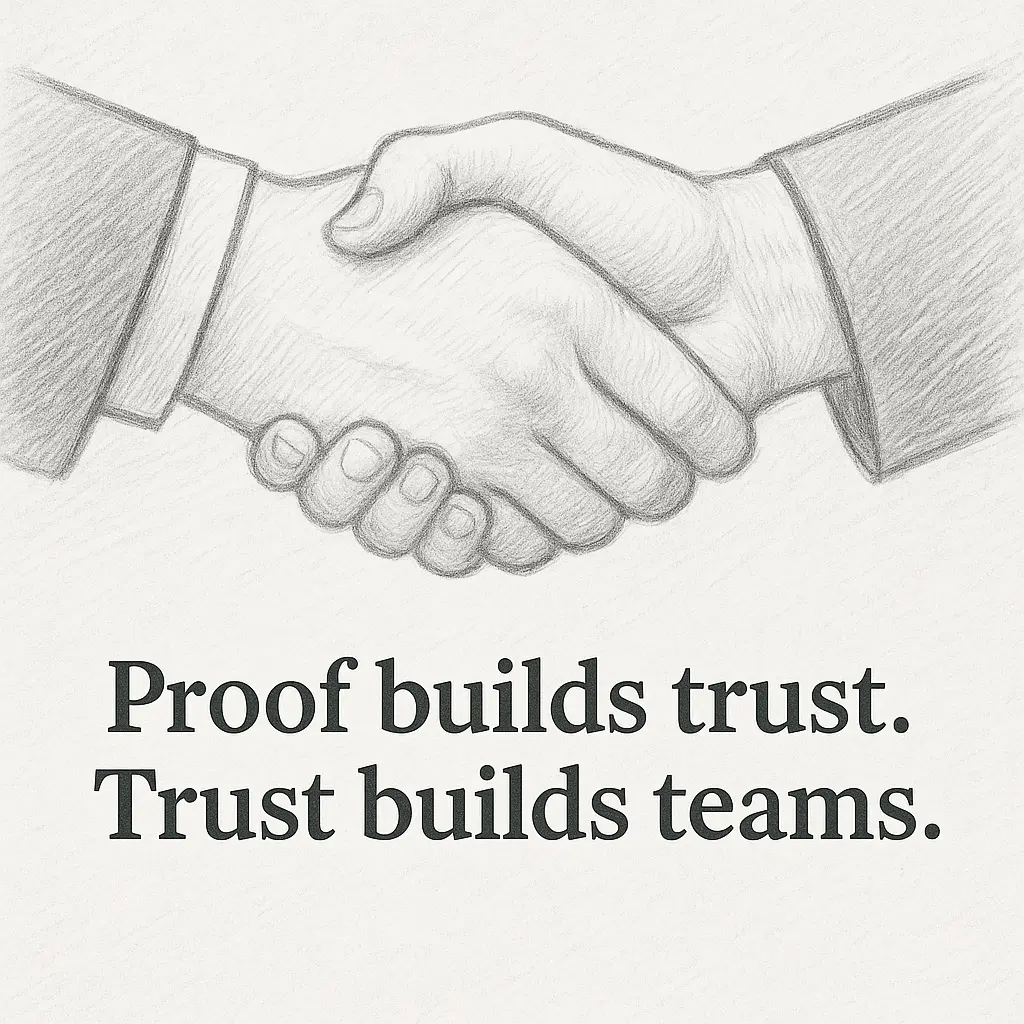
Proof Projects That Perform Well in 2025 Hiring
What Recruiters Validate
Smart Contract Developer
Mini DeFi protocol with on-chain tests
Gas reports + audit readiness
QA / Auditor Candidate
Attack simulation using Foundry
Security awareness + reproducibility
UI/UX Designer
Token-gated interface flow
UX clarity + usability metrics
Content Writer
Explainer on zk-proofs for non-dev audience
(Find similar roles on the AOB Job Board → https://artofblockchain.club/jobs)
Final Reflection — Proof ≠ Perfection
After analyzing hundreds of threads and case studies across ArtofBlockchain.club, one theme echoes through both recruiters and candidates:
Proof isn’t about being flawless — it’s about being verifiable.
The most trusted professionals aren’t those who hide mistakes but those who document their corrections.
In a transparent industry, growth is the strongest signal of competence.